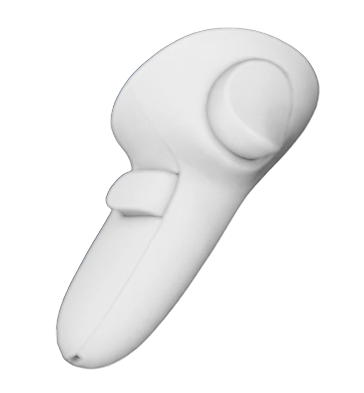It’s no secret that surgical training tools designed to be true-to-life in virtual reality require first-hand knowledge from experts within the medical field. That’s why surgeon-led Osso VR has an Advisory Board of healthcare leaders that contributes to the educational value and clinical accuracy of the platform.
The latest addition to the esteemed panel? Cory Calendine, MD. In addition to being a talented orthopedic surgeon, he also manages to balance lecturing nationally and internationally on the latest joint replacement techniques and advancements, serves on editorial boards for several journal publications, consults, leads medical missions, runs a youth ministry and (most importantly) is a devout family man.
We sat down with Dr. Calendine to learn more about his journey into healthcare, asked him how he ended up trying virtual reality in the first place and got advice for both surgeons and medical device professionals new to using VR.
Dr. Calendine: My father was a preacher so I knew I wanted to help people. My two older brothers chose to pursue medicine and had a massive effect on me. My mom told me I could do anything in life. I am just so thankful to have landed in the medical field. Now, why orthopaedics? Well, that was mainly because I get to use power tools.
Dr. Calendine: Choose? I am humbled by the opportunity.
We need better, safer ways to train surgeons. I once had a mentor tell me “the OR is no place to think.” It sounds crazy at first, but the heart of the comment is the better you plan/train before the patient lays in front of you the better you can perform when it counts.
The first time I looked at Osso VR tech, Justin (Dr. Barad) - the CEO - took my call and walked me through the setup including helping me find the “on” button for the headset. I provided feedback - yes, surgeons occasionally have firm opinions. He was completely open, receptive, even pushing me to dig deeper for feedback. Without any formal relationship with Osso VR, I have interacted with several on the team - all professionals, all open, and all pushing me to find more feedback. I want to be a part of people who are always trying to be better, something more.
Interesting that you mention culture. There is something special happening at Osso VR. It would be hard to be on LinkedIn and miss the frequent posts from a wide range of professionals (artists, marketing, finance, medical) telling their story about why they joined Osso VR. And, given Osso VR’s massive growth, more are coming. This company - guided by its CEO Justin Barad - is unified around a mission to improve patient outcomes - every patient, everywhere. I believe they (we) can.
Dr. Calendine: It is cliche to say “practice makes perfect” or one of the phrase’s enhancements like “perfect practice makes perfect”, but the truth stands that volume and repetition lead to better patient outcomes in surgery. This has been shown again and again in multiple surgical disciplines.
VR delivers the opportunity for repetition - in a safe environment (perfect for the patient), available 24/7 (perfect for the surgeon). VR can provide education and guidance at each surgical step, but these prompts can then be removed to simulate the surgeon operating alone - offering an environment to assess level of competency. No one wants a perfect score more than a surgeon.
With collaborative mode, multiple people can be in the same virtual environment no matter where they are physically. Imagine the value of having an international surgeon who is pioneering a new approach drop in - without travel time/cost burden - to a virtual space where other surgeons are working through a case on a virtual patient. Or even the ability to have all the members of your surgical team (scrub tech, first assistance, PA) join you in a virtual OR to go through a case with a new technology platform before introducing it at your hospital. We are just scratching the surface of how VR can make patient care better.
Dr. Calendine: Incredibly realistic.
We have been working on this program to train surgeons on robotics for joint replacement - so I asked one of my senior partners to try it out. He already had robotic experience but not gaming experience. Within moments, he was underway with ease - manipulating the patient’s leg, grabbing surgical instruments off the table, tightening clamps, and registering the bony landmarks.
After about 10 minutes inside the platform, he was done. Voila.
Now, instead of actual surgical instruments in his hands during this experience, he had the VR hand controls of course. He was so convinced by the experience he tried to set the VR hand pieces on the surgical table - that was not actually there. When they hit the ground, he apologized for almost breaking the equipment.
Dr. Calendine: Try it.
I was skeptical - it's okay to be skeptical. I was entrenched (and well-trained) in tried and true methods of procedural education, but also witnessed a massive threat to conventional methods by work hour restrictions for residents and the COVID effect. Not to mention, technology in surgery is advancing at an unprecedented pace - so why not use technology (VR) to experience and learn what is new to you before changing care for your patient. Because, in the end, that is what it is all about for me (and my fellow surgeons) - the patient.
If you’re looking to learn more about virtual reality for surgical training, try checking out our ultimate guide to get started, Virtual reality for surgical training 101: The ultimate guide to VR in healthcare.
Ready to start your own digital learning journey with VR? Schedule a demo with our team here.


